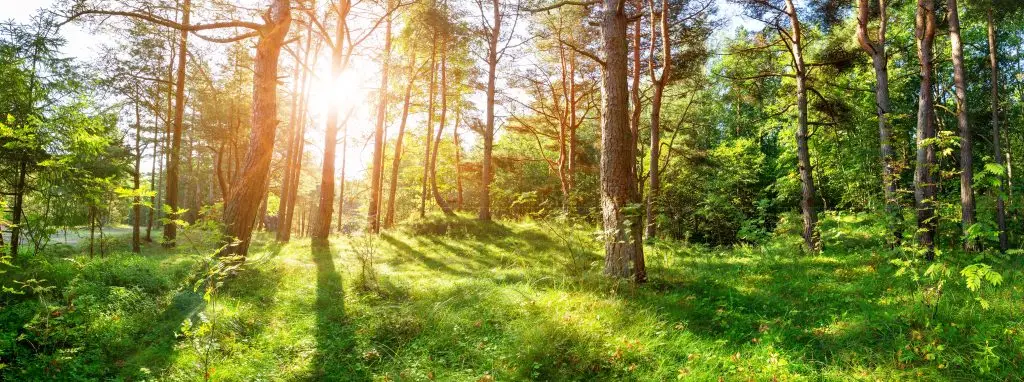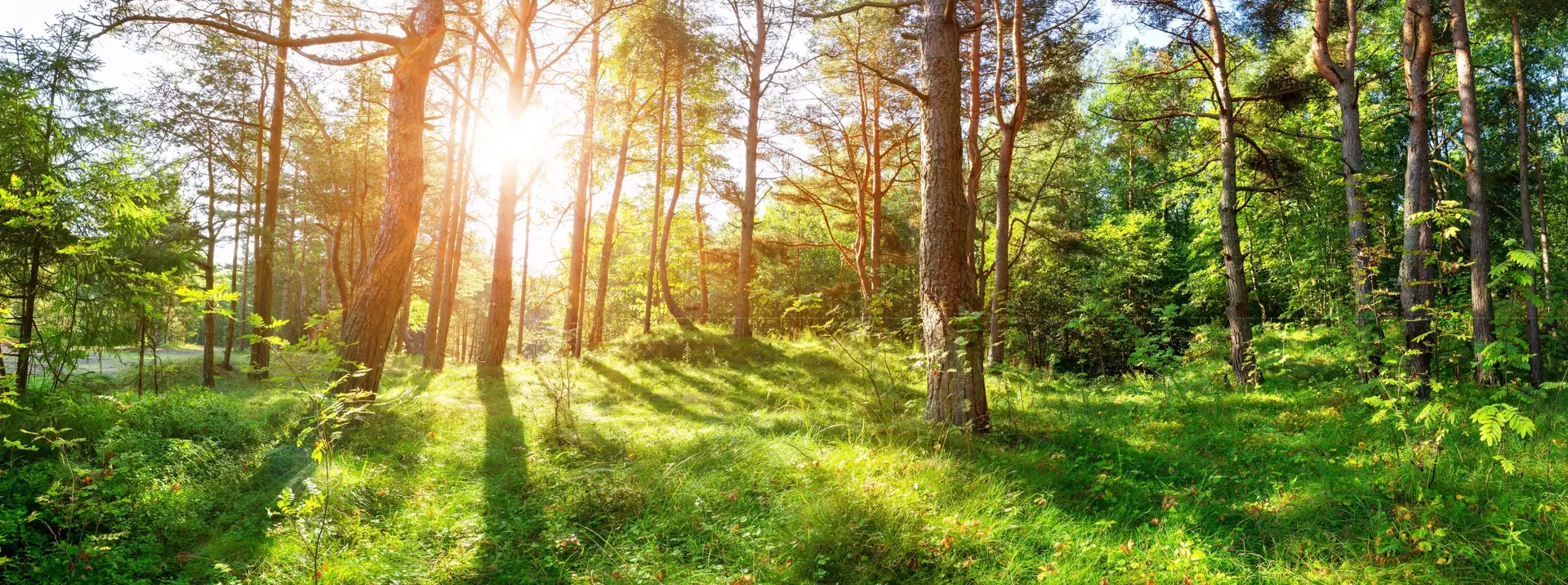Forests make up 33% or 747 million acres of the US and play an important part in the environment and our livelihoods. Today, when forests are mentioned, it is usually in connection with forest fires. Other times, we rarely think about forests even though they are extremely vital for our existence and must be protected.
Within the forest ecosystem, there are three distinct layers: canopy layer (uppermost layer of tall trees), understory layer (smaller trees, shrubs and vines) and forest floor layer. The forest layers function together to provide us with several benefits which sustain all life on earth.
The Vital Role Forests Play
Forests provide essential ecological, economic, and social benefits. They purify air by producing oxygen and absorbing carbon dioxide, regulate the water cycle, and protect soil from erosion and contamination. Forests sustain ecosystems and biodiversity, hosting 80% of plant and animal species, while mitigating climate change by storing carbon and influencing regional climates. They support human livelihoods through resources like timber, food, and paper, and serve as a source of medicines (25% of current drugs). Additionally, forests offer wildlife shelter and recreational opportunities for people. Protecting forests through vegetation management is critical to maintaining these benefits and safeguarding our way of life.
Major threats to forests
There are five major threats to forests including:
- Invasive species – plants, animals, insects, and diseases are a continuous threat to forests. Invasive plants are regarded as the most serious threat among invasive species.
- Wildfires–uncontrolled fires that burn forest vegetation and can threaten other habitats and human settlements.
- Climate change – without sustainable management of forests, nature’s capabilities to mitigate climate change would be negatively impacted.
- Urbanization–forests that are located next to urban areas are exposed to high temperatures, pollution, invasive species, and other factors that threaten forest health.
- Forest fragmentation – As urbanized areas expand, they encroach upon preserved areas, like national wildlife refuges, and lead to the dividing of forests into smaller fragments.
The US Forest Service lists invasive species as the most significant threat to forests, along with wildfires. Wildfires often get our attention because of their nature and capacity to cause sudden serious harm to our way of life. On the other hand, invasive species are like cancer; they do not have an immediate impact but can cause damage that is long-term and more severe than wildfires.
Why are invasive species so devastating?
First, invasive species may either be native or nonnative (exotic). The difference between the two types of invasive species is that the native species are of local origin that can be easier to manage, whereas the nonnative species are foreign and can be a challenge to manage.
Second, invasive species of the most concern are plants. Thus, nonnative invasive plant species can enter a habitat, become established, displace native plant species, and change the nature of the habitat. For example:
- Tree-of-heaven is a small hardwood tree species that was introduced to the US as an ornamental plant and later became an invasive tree species. Tree-of-heaven is currently an invasive species that can adapt to a variety of environmental conditions, rapidly spread, displace native species, and dominate habitats.
- Cheatgrass is an annual grass species that was introduced to the US in shipments of wheat. Cheatgrass is currently an invasive species of forests where it is identified as a species that provides fuel for wildfires.
Third, there are several hundred invasive plant species that can invade forest vegetation, alter the composition of the forest vegetation, and make irreversible changes to the habitat. Without a sustainable vegetation management plan, the forest ecosystem will be threatened, and the numerous benefits we gain from forests will be diminished.
Why forest vegetation management is important
- Limit the impact of invasive plant species–Invasive plants degrade and threaten the integrity and native composition of forest ecosystems. They can increase tree seedling mortality and reduce growth in timber plantations. Invasive plants reduce wildlife habitat diversity, increase wildfire risk, and change soil chemistry. Invasive plant species also negatively impact forest health, biodiversity, ecosystem services, and profitable or commercial use.
- Help prevent the occurrence of wildfires – Invasive plants in the forest understory vegetation can exacerbate fires by creating abnormal increases in the buildup of fuel on the forest floor. Invasive plants tend to burn hotter and provide fuel for more frequent fires.
- Help stabilize climate – Vegetation management plans that enhance the capabilities of forests to continue providing benefits improve the forest’s capability to absorb atmospheric carbon dioxide that would otherwise contribute to global warming and climate change.
Steps in forest vegetation management
- Identify forest vegetation management needs – determine the extent of invasive plant species in the habitat. Knowing whether it is a small hardwood tree species like tree-of-heaven or a herbaceous species like cheatgrass provides important information that aids the management of the invasive plants. In addition, knowing the species composition of forest vegetation will help determine the type of management needed and the plant species that need to be protected.
- Decide which control technique to use – usually, selective herbicides are applied for forest vegetation management in a manner that effectively controls targeted vegetation without causing damage to non-targets and the environment.
- Read the product label – to ensure that the selected herbicide is safe to use where it is to be applied.
- Select an appropriate adjuvant and method of herbicide application. The addition of an adjuvant to a spray mixture can enhance the activity of the herbicide and/or modify its physical properties. For example:
- Young tree-of-heaven plants can be controlled with basal applications of herbicide applied using a handheld sprayer, or a backpack sprayer. With this technique, herbicide spray is delivered to the lower 6 to 12 inches of the bark of the tree trunk. Using a nonionic surfactant specifically designed for basal application of herbicide, e.g., JLB Oil Plus Improved™, can result in excellent control of tree-of-heaven.
- Cheatgrass plants can be controlled when the spray mixture includes an adjuvant that improves the ability of the herbicide to penetrate the leaf surface for improved control. Using a nonionic surfactant and penetrant, e.g., Cide-Kick II™, can result in excellent control of cheatgrass.
- Evaluate the effectiveness of your control measures after two or three weeks of herbicide application. Repeat herbicide application if needed, and if possible.
Vegetation management that minimizes the impact of invasive plant species is an important undertaking that must be embraced by all of humanity. Preserving our forests helps sustain countless benefits and sustain our livelihoods.
Brewer International has been a leader in land and water chemistry since the 1980s and for over 40 years has proudly served its national and regional distributors.
Our products are used widely across the United States in agriculture, aquatics, forestry, rights of way, and land management.
Our customers trust our dedication to quality ingredients, tried and true formulas, and positive outcomes.


